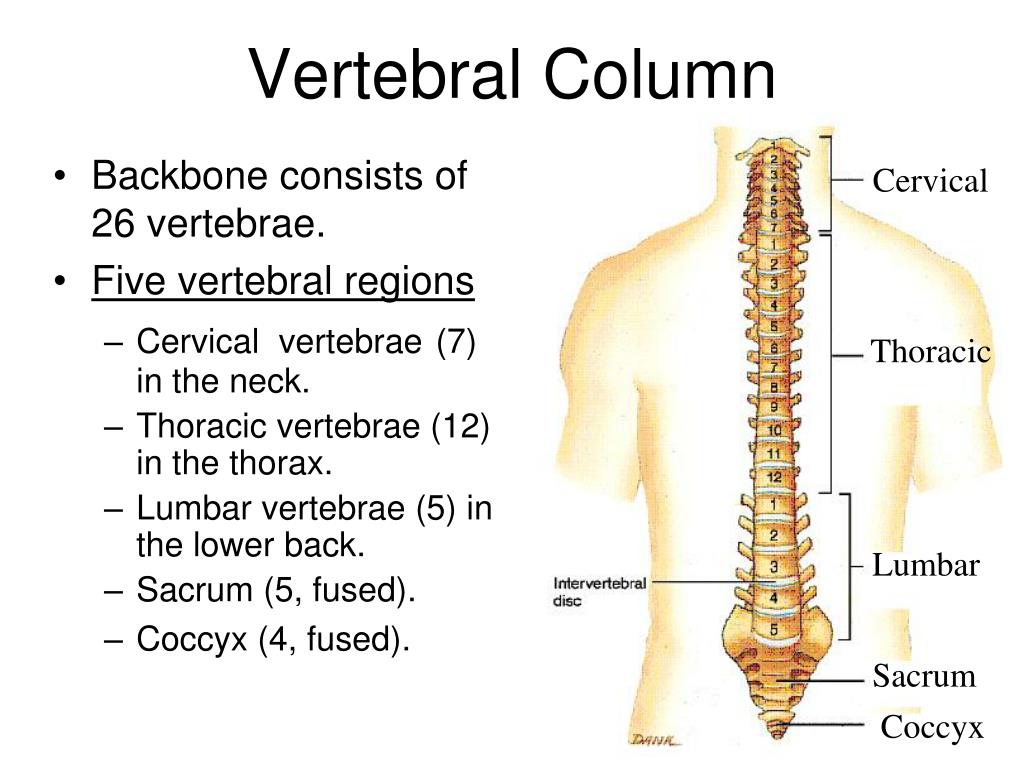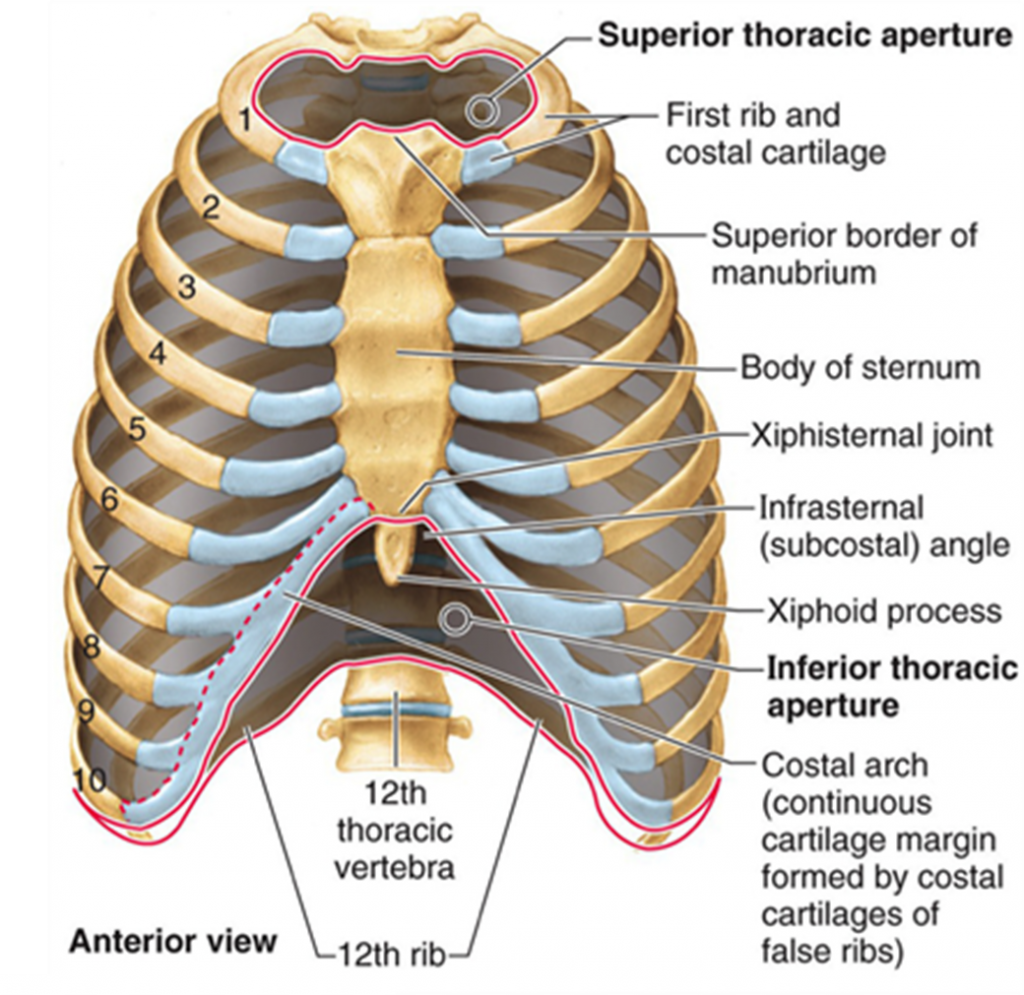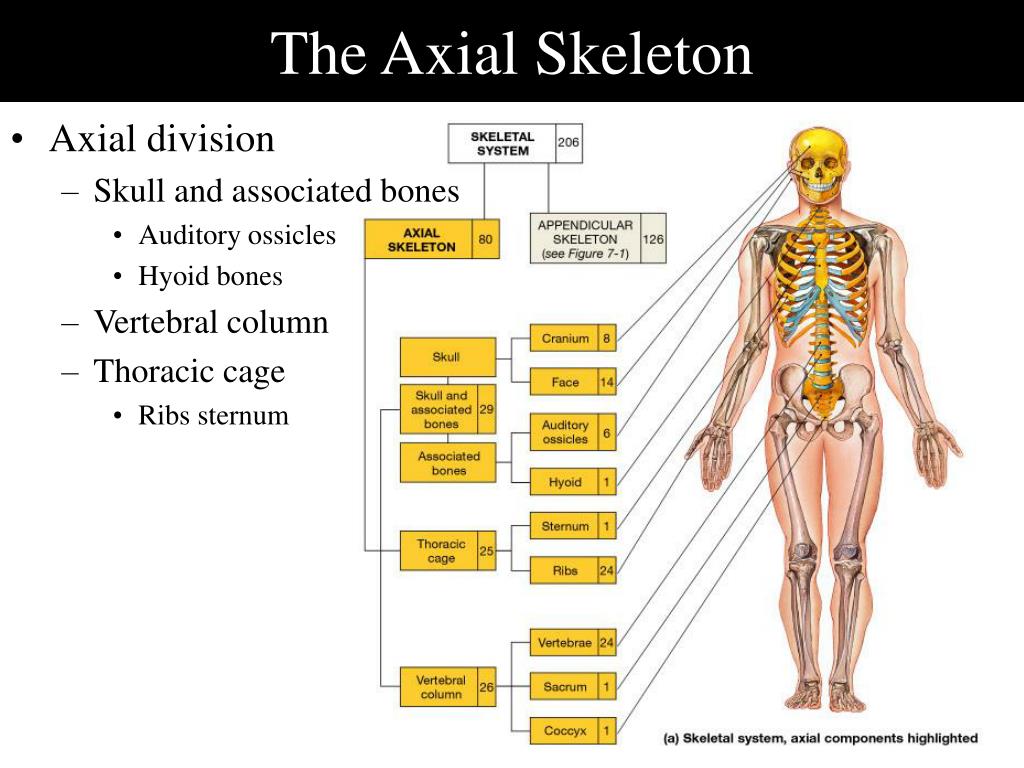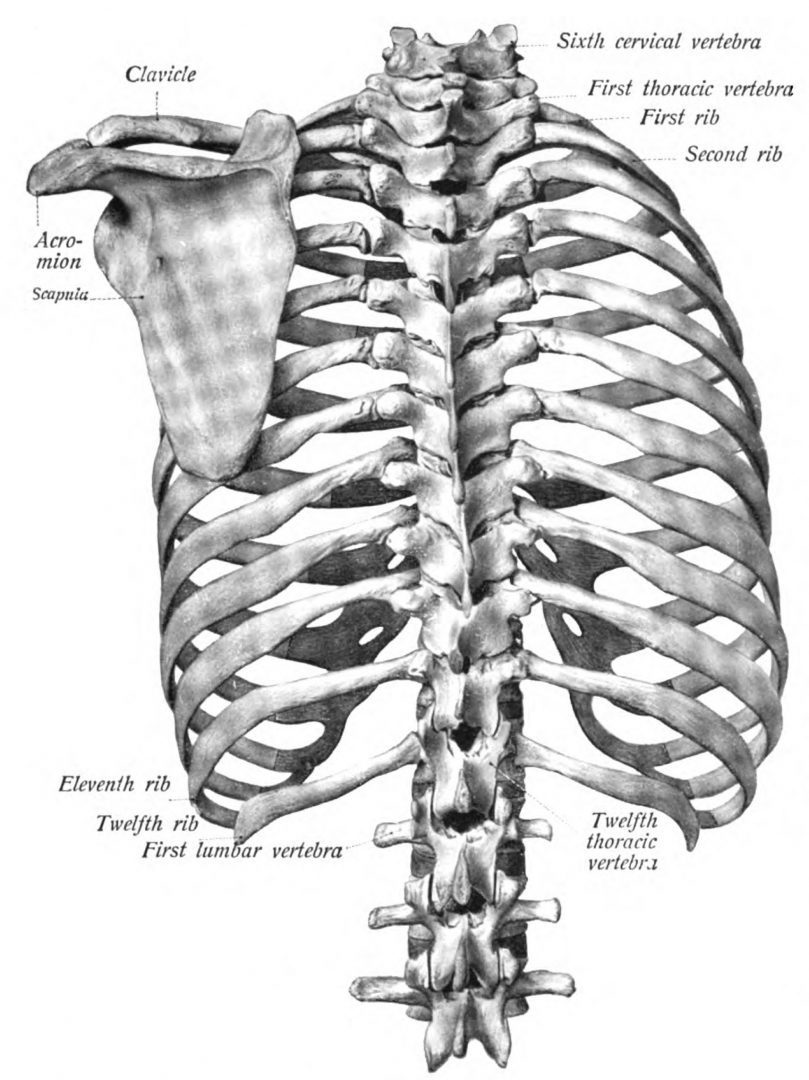The Skull Vertebral Column And Thoracic Cage Form The
The Skull Vertebral Column And Thoracic Cage Form The - Web learning objectives by the end of this section, you will be able to: Shaft portion of a rib. The large hole located in the base of the occipital bone that allows. It consists of the 12 pairs of ribs with their costal cartilages and the sternum ( figure 7.32 ). Web the vertebrae are divided into three regions: Web the axial skeleton of the adult consists of 80 bones, including the skull, the vertebral column, and the thoracic cage. The bone that forms the back of the head and connects with the occipital condyles and foramen magnum — skeletal structures located on the. Web consist of the bony and cartilaginous parts that support and protect the organs of the head, neck, and trunk. If you look at a diagram of the axial skeleton you will see the bones of the head. Central, vertical axis of the body, including the skull, vertebral column, and thoracic cage.
It consists of the 12 pairs of ribs with their costal cartilages and the sternum ( figure 7.32 ). Together, the vertebrae and intervertebral discs form the. The skull, vertebral column, and thoracic cage form the ___________ skeleton. Web the vertebrae are divided into three regions: Web so, the answer is that the skull, vertebral column, and thoraic cage form the axial skeleton. If you look at a diagram of the axial skeleton you will see the bones of the head. Web the axial skeleton supports the head, neck, back, and chest and thus forms the vertical axis of the body. Central, vertical axis of the body, including the skull, vertebral column, and thoracic cage. Web to examine the vertebral column and thoracic cage of the skeleton and to identify the bones and major features of these parts. Discuss the components that make up the thoracic cage identify the parts of the sternum and define the sternal.
Web to examine the vertebral column and thoracic cage of the skeleton and to identify the bones and major features of these parts. Web the axial skeleton forms the central axis of the human body and consists of the skull, vertebral column, and thoracic cage. Web learning objectives by the end of this section, you will be able to: The bone that forms the back of the head and connects with the occipital condyles and foramen magnum — skeletal structures located on the. The vertebral column is curved, with two. It consists of 24 vertebrae bones, and two bones from the axial. Central, vertical axis of the body, including the skull, vertebral column, and thoracic cage. Web it consists of the skull, vertebral column (including the sacrum and coccyx), and the thoracic cage, formed by the ribs and sternum. Web the vertebrae are divided into three regions: The skull is formed by 22 bones.
Structure of human skull and spinal column illustration Stock Photo
The vertebral column is more colloquially called the backbone or the spine. Shaft portion of a rib. Web the vertebrae are divided into three regions: Web the axial skeleton consists of the vertebral column, the skull, and the thoracic cage. Web it consists of a sequence of vertebrae (singular = vertebra), each of which is separated and united by an.
PPT Lab05 Vertebrae Ribs and rib articulation Sternum Skull Review
Web identify all of these dermal bones on the wolf skull and learn them. Web to examine the vertebral column and thoracic cage of the skeleton and to identify the bones and major features of these parts. Web consist of the bony and cartilaginous parts that support and protect the organs of the head, neck, and trunk. The skull is.
Thoracic, Chest & Rib Pain Aligned for Life
If you look at a diagram of the axial skeleton you will see the bones of the head. Learning objectives describe the bones and. The single sacrum, which is also part of the pelvis, is formed by. Composed of the 8 bones of the cranium and 14 facial bones. It consists of the 12 pairs of ribs with their costal.
Human Axial Skeleton Biology for Majors II
If you look at a diagram of the axial skeleton you will see the bones of the head. The single sacrum, which is also part of the pelvis, is formed by. It consists of the 12 pairs of ribs with their costal cartilages and the sternum ( figure 7.32 ). Web the axial skeleton forms the central axis of the.
PPT Anatomy of Skeletal Elements PowerPoint Presentation ID339277
Web it consists of a sequence of vertebrae (singular = vertebra), each of which is separated and united by an intervertebral disc. Learning objectives describe the bones and. The skull is divided into anterior and posterior parts. Web it consists of the skull, vertebral column (including the sacrum and coccyx), and the thoracic cage, formed by the ribs and sternum..
Pin by Shaniyah on Nursing students in 2020 Anatomy bones, Human
The large hole located in the base of the occipital bone that allows. Web to examine the vertebral column and thoracic cage of the skeleton and to identify the bones and major features of these parts. The skull, vertebral column, and thoracic cage form the ___________ skeleton. Web the axial skeleton forms the central axis of the human body and.
3d Illustration Of Axial Skeleton Include Skull Vertebral Column And
The skull is formed by 22 bones. Web learning objectives by the end of this section, you will be able to: Web the thoracic cage (rib cage) forms the thorax (chest) portion of the body. Central, vertical axis of the body, including the skull, vertebral column, and thoracic cage. Web it consists of a sequence of vertebrae (singular = vertebra),.
Divisions of the Skeletal System · Anatomy and Physiology
Composed of the 8 bones of the cranium and 14 facial bones. Web learning objectives by the end of this section, you will be able to: Learning objectives describe the bones and. Shaft portion of a rib. Web the thoracic cage (rib cage) forms the thorax (chest) portion of the body.
05 Axial Skeleton Vertebral Column And Thoracic Cage
Web it consists of a sequence of vertebrae (singular = vertebra), each of which is separated and united by an intervertebral disc. Composed of the 8 bones of the cranium and 14 facial bones. Web consist of the bony and cartilaginous parts that support and protect the organs of the head, neck, and trunk. Web learning objectives by the end.
Anatomy of the Thorax → Thoracic Vertebral Column Meddists
The skull functions to protect the brain. The skull is divided into anterior and posterior parts. It consists of the skull, vertebral column (including the sacrum and. Web the axial skeleton of the adult consists of 80 bones, including the skull, the vertebral column, and the thoracic cage. Web the vertebral column.
Web The Vertebral Column.
These bones are grouped as the facial (upper jaw, nose), v ault (front of skull), orbital (around eyes),. The single sacrum, which is also part of the pelvis, is formed by. Learning objectives describe the bones and. The vertebral column is curved, with two.
The Large Hole Located In The Base Of The Occipital Bone That Allows.
Discuss the components that make up the thoracic cage identify the parts of the sternum and define the sternal. The vertebral column is more colloquially called the backbone or the spine. The skull, vertebral column, and thoracic cage form the ___________ skeleton. The skull functions to protect the brain.
Web It Consists Of The Skull, Vertebral Column (Including The Sacrum And Coccyx), And The Thoracic Cage, Formed By The Ribs And Sternum.
Web the vertebrae are divided into three regions: Shaft portion of a rib. Web the axial skeleton consists of the vertebral column, the skull, and the thoracic cage. Web the thoracic cage (rib cage) forms the thorax (chest) portion of the body.
The Bone That Forms The Back Of The Head And Connects With The Occipital Condyles And Foramen Magnum — Skeletal Structures Located On The.
Central, vertical axis of the body, including the skull, vertebral column, and thoracic cage. Web consist of the bony and cartilaginous parts that support and protect the organs of the head, neck, and trunk. Web the axial skeleton forms the central axis of the body and includes the bones of the skull, ossicles of the middle ear, hyoid bone of the throat, vertebral column, and the thoracic. It consists of the skull, vertebral column (including the sacrum and.









